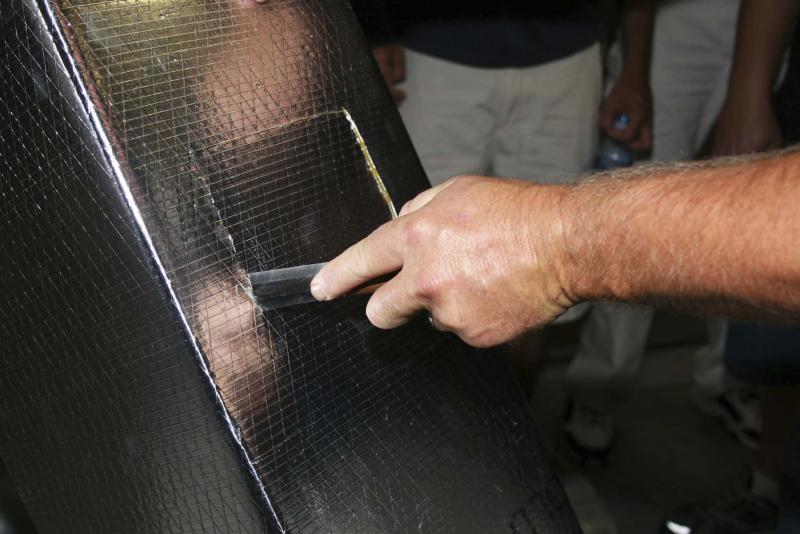Question: I have a question related to insulated fresh air intakes. Should those intakes be replaced periodically? Can they be a source of concern for air quality in a home? Can mould and other unwanted products be caused by the warming of cold air into the ducts over a period of years? Thanks. — Brent Reed
Answer: Like many components of house systems, ducts may need some maintenance or at least monitoring to ensure there are minimal issues. Mould could be a problem, depending on the type of ducting materials, but should be easily remedied if an issue does occur.
Fresh air intake ducts, like any items that bridge between the indoor and outdoor environment, may have an issue with condensation. Because the temperature differential can be quite high between these two areas, any air passing between can be affected. This is much more of a consideration for ducts that vent warmer indoor air, but could also be problematic if intake ducts are damaged or deteriorated. Many newer styles of ducting are corrugated plastic with an insulated sheath, which can be susceptible to mechanical damage. I will endeavour to explain why this could be a problem, and recommend actions to ensure this does not create an ideal environment for mould growth.
As stated numerous times in this column, mould requires three basic components to form. It needs heat, a cellulose-based food source and, most importantly, moisture. Since the basement area where these intake ducts are located is heated, the first variable is present. Secondly, dust, dirt, leaves, grass clippings and other outdoor components may be drawn into the duct through the screened vent hood. To prevent this intake of potential food sources, regular inspection and manual cleaning of the vent hood and screen is all that is required.
Finally, eliminating condensation on the intake duct will prevent excessive moisture from forming in the ducting. This is often accomplished by simply installing insulation and an air barrier on the duct.
Whether your intake duct is solid metal, corrugated plastic or flexible metal, insulating the initial portion that enters the basement through the foundation or floor joists should be a given. This could be accomplished by spraying on polyurethane foam from a can, or wrapping the duct with insulation and a plastic air/vapour barrier, but the easiest method may be to use pre-manufactured duct insulation. This material is often sold with internal, corrugated plastic duct built in, but can be retrofit to existing ducts, as well. By purchasing insulation with a slightly larger diameter than your existing ducts and removing the internal flex-duct, the insulation portion could be slipped over your current piping. Taping up the ends and any cuts with plastic tape should ensure the air barrier is reasonably well sealed. After insulating the colder portion of the duct adjacent to the outside walls, the remainder of the duct should be only slightly cooler than the indoor air. If it is still substantially colder, installation of additional insulation may be required.
The reason that insulation on the ducting is important is to prevent condensation on the exterior of the duct. Since the air brought into the duct during the cold winter is below freezing, warm indoor air hitting the duct may easily drop in temperature past its dew point and condense on the pipe. While this will normally only affect the outside of the ducting, metal or plastic, this moisture could enter the duct, or the insulation, if it is damaged or has holes or openings. Flexible ducting is much more prone to this issue, but solid metal ducts may also have small gaps between the sections, or openings from screws holding them together and securing them in place. Openings in either of these materials could be sealed with plastic or aluminum duct tape, but if the ducts are constantly wet or frost-covered in the heating season, mould growth is possible. Replacing any water-logged or damaged insulation should be done if it is detected.
Now, the reason mould is not very likely has to do with the properties of the air inside and outside the home. The reason we install fresh air intakes is to ensure proper fresh air ventilation to our homes, but also to help dry out humid air inside the building. Because the air is so much colder outside in the winter, it can only hold a small amount of moisture, even with high relative humidity (RH). When it is warmed up, by entering the home through the fresh air intake duct, the RH of that air drops considerably. That dry air enters the basement, HRV or heating system and mixes with the wetter indoor air. This phenomenon will lower the moisture content and RH of the overall indoor air, preventing condensation inside the home. The same thing will be occurring inside the intake ducting, as well as good air movement, both of which are preventive measures for moisture issues. Even if the duct has debris inside that could support mould growth, the warming air and good circulation should prevent any serious condensation inside the pipe itself.
The key to prevention of mould growth within any fresh air intake ducts entering your home from the exterior is to keep the vent hoods clean, clear and the ducts and insulation in good condition. Even if some frost or condensation does form on the outside of the ducting or air barrier, preventing it from wetting the insulation or entering the duct through openings should ensure the pipes remain mould-free. If your flexible ducting or insulation does become excessively wet or damaged, replacement with new material should be an easy repair.
Ari Marantz is the owner of Trained Eye Home Inspection Ltd. and the past president of the Canadian Association of Home & Property Inspectors — Manitoba (cahpi.mb.ca). Questions can be emailed to the address below. Ari can be reached at 204-291-5358 or check out his website at trainedeye.ca.
trainedeye@iname.com




